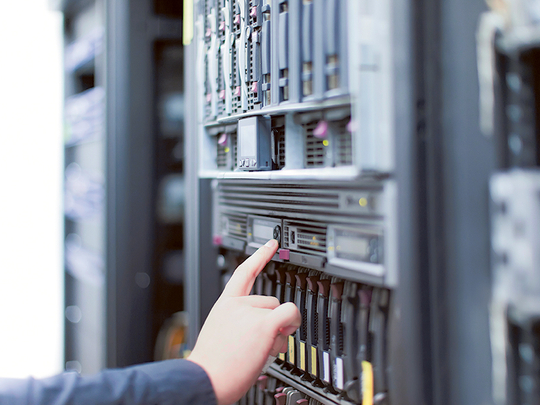
Dubai: Japanese giant Fujitsu has come a long way in developing high-performance computers (HPC), also known as supercomputers, and is the largest vendor in the Asian market.
It has been a leading HPC vendor in Europe with more than 1,200 HPC installations.
“The importance of HPC is rapidly growing because increasingly scientific and technical problems are being studied on the basis of computer simulations. HPC offers analysts, engineers and scientists the computing resources they need to make vital decisions, to promote product innovations, and to speed up research and development,” said Francois Fleutiaux, senior vice-president and head of West Europe Middle East India and Africa (WEMEIA) at Fujitsu.
He said the scope for supercomputers in the Gulf is for big oil and gas sectors, for analytics and in universities. There are smaller HPCs for simulations or real-time data from oil sector and small- and mid-size businesses.
“It is right time for the UAE to look into number of systems and applications that can manage that super growth,” he said.
Fujitsu developed Japan’s first supercomputer — Facom 230-75APU — in 1977.
Saudi Arabia has the largest number of powerful supercomputers installed in the Middle East.
Supercomputers were introduced in the 1960s, made initially, by Seymour Cray. Even though the US remains the top country in terms of supercomputers, China’s Tianhe-2 supercomputer is the fastest globally at 33.86 petaflops or 33.86 quadrillion floating point operations per second (Flops) as of November 2014.
In supercomputers, the speed is measured in “Flops”.
Teraflops or TFlops are 1012 Flops, petaflops or PFlops are 1015 (1000 trillion) Flops and exaflops or EFlops are 1018 (one quintillion or one million TFLOPS) Flops.
Saudi Aramco’s Faris System, with 816.6 TFlops, was rated 62nd as of November 2014 while King Abdulaziz City for Science and Technology has Sanam system, which was ranked 93rd fastest with 532.6 TFlops. Saudi Aramco’s Makman system with 441.8 Teraflops was ranked 111 as of November 2014.
Saudi’s King Abdullah University of Science and Technology (KAUST)’s IBM-based Shaheen Blue Gene/P Solution with a maximum performance of 190.9 TFlops was ranked 14th fastest in June 2009.
New York University Abu Dhabi also had ‘BuTinah’ HPC installed in 2013 and runs at approximately 70 teraflops while Ankabut, UAE’s Advanced National Research and Education Network also has a HPC installed.
KAUST is gearing up for a new supercomputer — Shaheen-2 — twenty-five times more powerful than its current system.
According to industry experts, supercomputers will reach one EFlops (1018 or one quintillion flops) by 2018.
King Abdul Aziz University (KAU), the largest university in Saudi Arabia, is installing a new Fujitsu HPC system named Aziz that will have a theoretical peak performance of 230 teraflops.
HPC are mainly used for research and development.
“We have been with them for a while to move to the next level of technology for them and for 15 other universities to use their technology. KAU will be able to increase its research capabilities in engineering, nanotechnology, and simulations, while enhancing its prowess in educational experiments,” Fleutiaux said.
“This is the first for Fujistu in the Middle East. We did not work on the high-speed specs; we worked on cluster solutions optimised for their business needs,” he said.
He said the mainframe is still in use by some industries, but a number of industries is moving away from it and going to open-source technologies. They want to have good ties with their providers and scale up recent technologies and the freedom in their applications.










